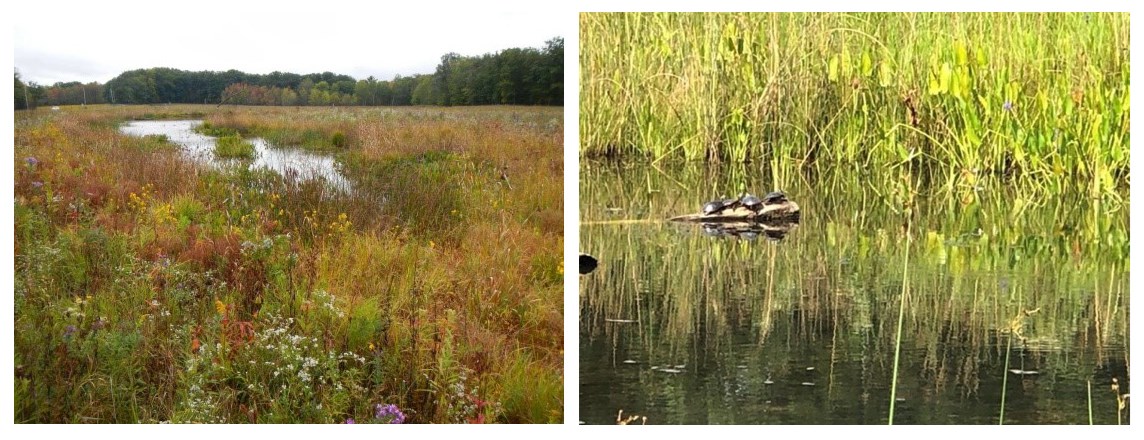Last updated: July 7, 2022
Article
A Story of Transformation - Toxic Dump to Thriving Pastoral Wetlands – How the National Park Service built a Cleanup Practice
They are back! The birds, bugs, and turtles are thriving. But this was not always the case. This is a story about transformations – of a toxic waste dump to a wild and species-rich ecosystem, and of a National Park Service (NPS) cleanup practice that ensures public lands are protected and restored when impacted by contamination, and that those responsible pay for the cleanup. This story takes place in a picturesque national park in Ohio – Cuyahoga Valley – situated between Akron and Cleveland; it is a vibrant recreational park encompassing 33,000 acres along the Cuyahoga River, known as "the river that burned."

The Dump Site: BEFORE
When the NPS acquired the 50-acre property in the 1980s, park officials knew the site had been used as a scrapyard, but once NPS took ownership, it recognized that the site represented a much more serious problem. People were getting sick and the natural environment – wetlands, underground water sources, flora and fauna – was decimated. Over the following years, tons of contaminated soils and thousands of drums of extremely hazardous chemicals – polychlorinated biphenyls (PCBs), dioxins, arsenic and other heavy metals and carcinogens, were removed. During this time, a Park visitor's experience would have been limited to reading the signs "KEEP OUT – DO NOT ENTER."

The Thriving Pastoral Wetlands: AFTER
The NPS dedicated more than 25 years to investigating the contamination, cleaning up the site, restoring the natural habitats and wetland ecosystem, and ensuring those parties responsible for the contamination bore the cleanup costs. Today, indigenous plants have been restored, and natural wetlands and all the plant and animal species they support are thriving. Park visitors who experience the full-summer landscape find themselves soaking up the vista of native wildflowers and grasses as they watch turtles sun themselves on floating logs and listen to birds sing.
The Cleanup Practice: NOW
The rest of the story is about transformation of human behavior, evolution of laws and justice, and how this one site cleanup has influenced and changed the way the NPS and other land management agencies protect, reclaim, and restore our most valued resources today. Now, robust federal laws and enforcement programs are in place that help protect against the improper disposal of hazardous wastes. Now, when contaminated lands are identified at a park, the NPS has a comprehensive, well-defined assessment and cleanup process in place that includes pursuing legal actions against those that caused the contamination. Today, the NPS's strategy and land acquisition protocols require proper evaluation of lands prior to acceptance into the Agency. For more on the evolution of the NPS cleanup practice – read the article "From Toxic Waste to Sunflowers."
The transformation story at Cuyahoga Valley is not the only NPS success story. With more than 500+ potentially contaminated sites located on NPS lands, we have much more work to do and many more transformations to lead. To see these locations, view our map. The green-star icons represent sites that have been cleaned and restored, the red-diamonds represent the remaining sites yet to be cleaned. Clicking on them provides information on the size and type of site.
